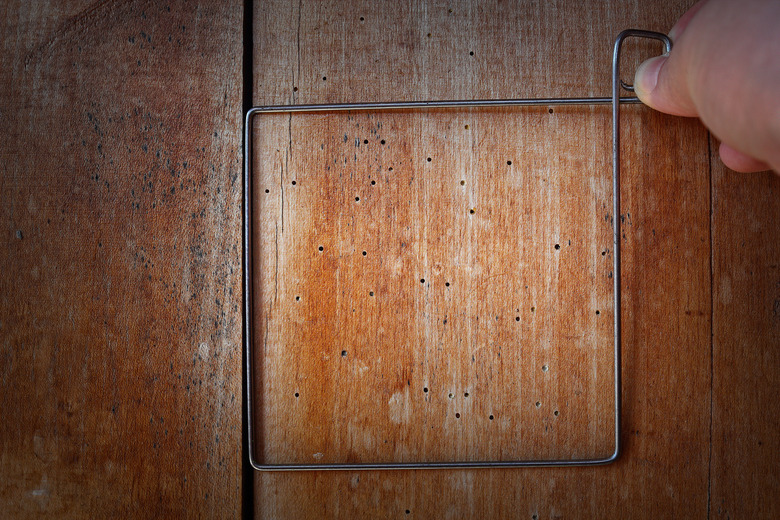How To Get Rid Of Wood-Boring Beetles
We may receive a commission on purchases made from links.
Wood-boring beetles aren't picky. They're just as happy to infest a dying tree out in a remote forest as they are to make a home in your wooden staircase. Once they've eaten their way into wood, the beetles lay their eggs there. New beetles then bore their way out of the wood and right into your house if they were hiding inside a piece of furniture or lumber that's now part of your home.
Basics of Wood-Boring Beetles
Basics of Wood-Boring Beetles
The term "wood-boring beetles" actually encompasses hundreds of different kinds of insects. Many species of powderpost beetles (family Lyctidae) exist, and they are some of the most common wood-boring beetles that people encounter. Powderpost beetles are generally brown insects no more than 1/4 inch long that primarily target seasoned hardwoods, including wooden flooring and furniture. They're identifiable by the tiny exit holes they leave in wood (no larger than the tip of a ballpoint pen) and the tiny piles of fine dust (or frass) they leave outside these holes. If you've noticed something that looks like sawdust on your wooden stairs or you've seen tiny brown bugs around your baseboards, powderpost beetles are a likely culprit.
Another common type of wood-boring beetle is the deathwatch, or furniture beetle (family Anobiidae). These beetles bore through both hardwoods and softwoods. They leave slightly larger exit holes than powderpost beetles and are known for making a clicking sound as they move through wood. False powderpost beetles (family Bostrichidae) may also infest hard or soft woods. Their exit holes are slightly larger than those left by powderpost beetles, and their frass may be slightly coarser.
Old house borers (family Cerambycidae) are also fairly common, though much larger than other common wood-boring beetles. They attack soft woods, like pine, and can be as long as 1 inch. These beetles leave exit holes that can be as large as dimes.
Getting Rid of Wood-Boring Beetles
Getting Rid of Wood-Boring Beetles
Unfortunately, there aren't a lot of great solutions for resolving an infestation of wood-boring beetles inside your home. At least with a termite infestation, you can sprinkle termite-killing granules around the perimeter, spray poisonous foam into affected areas, or even fumigate the entire home. None of those strategies will work to target beetle larvae hiding deep inside wood. Only prolonged extreme heat or cold will kill them, and you can't exactly put your beetle-damaged wood flooring into a freezer for several days.
You may still want to consult a professional pest control service if you notice new signs of insect damage inside your home. An experienced exterminator can tell what kind of insect is responsible for making holes in your wood and whether there's anything you can do to get rid of them.
Preventing Wood-Boring Beetles
Preventing Wood-Boring Beetles
Because there's not much you can do to eliminate wood-boring beetles once they're inside your home, prevention is key. Fully inspect any piece of wooden furniture for bore holes. Buy lumber and other raw wood only from reputable companies that know how to identify beetle damage and paint or varnish raw wood before bringing it indoors. Don't use recovered lumber (like that from an old barn) in your home since this wood is likely to be infested. Wood-boring beetles flourish in humid conditions, so controlling the moisture level in your home using dehumidifiers may be useful as a preventive measure.
Also, keep in mind that adult beetles could be living in your firewood. Keeping a big stack of wood indoors could allow beetles to escape and start boring into other wood surfaces. If possible, store firewood in a covered outdoor firewood rack to keep it dry. When you want to use your fireplace, use a sturdy firewood carrier to bring in just enough wood for one fire.
References
- PennState Extension: Powderpost Beetles
- PennState Extension: Old House Borer
- University of Maryland Extension: Powderpost Beetles
- University of Missouri Extension: Wood-Boring Beetles
- Washington Post: What To Do About Powder Post Beetles in Furniture
- Ortho: How to Prevent & Control Wood-Boring Beetles
